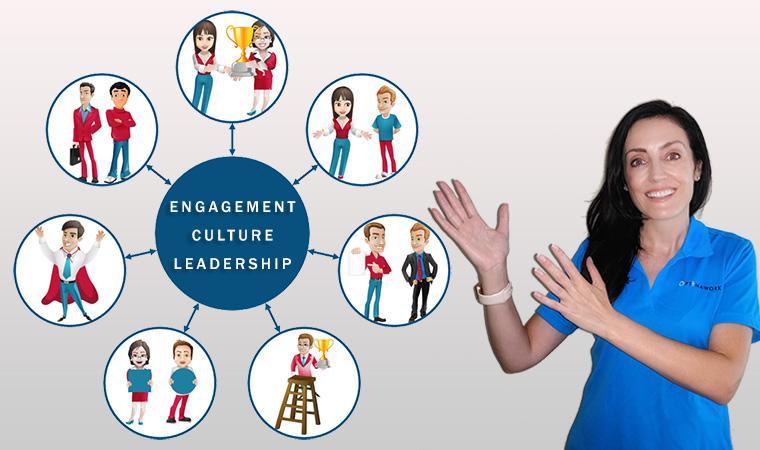![]()
 Foosball tables, casual dress code, 401k match, and an occasional free pizza are cool....but what really drives high levels of employee engagement and a great culture in any business is the relationships and trust people have with the company leadership, their immediate manager, and their peers.
Foosball tables, casual dress code, 401k match, and an occasional free pizza are cool....but what really drives high levels of employee engagement and a great culture in any business is the relationships and trust people have with the company leadership, their immediate manager, and their peers.
Here, we look at seven key areas that go a long way toward developing empathy, understanding, and trust within a team and the entire organization.
 FEELING VALUED
FEELING VALUED
When significant people in our lives listen, value our contribution, and reward us appropriately, we feel valued and motivated. This directly impacts our sense of self-worth and self-esteem, creating a positive self-image and allowing us to work to our full potential.
High self-esteem is the fuel that drives performance.
When employees feel special, they act special, and when they act special, the business benefits are huge.
 OPENNESS
OPENNESS
Creating a ‘safe’ work environment where employees are comfortable talking to each other rather than about each other builds trust quickly.
Openness is about having a transparent dialogue with our peers where we neither hide nor sugarcoat what we are thinking while maintaining workplace decorum. It ensures that people are kept informed of issues as they arise and that everyone receives current knowledge about an ever-changing situation.
It is also about being receptive to new ideas, questions, and feedback.
 FEEDBACK
FEEDBACK
Constructive feedback lets employees know to what extent they are furthering business objectives, and it builds trust between team members & management.
Feedback is not about assigning blame, passing judgment, or unleashing criticism for something but is about sharing reactions to another party’s activities, opinions, and behavior.
It should be seen as an opportunity to help the other party understand your needs, how to achieve them, and in what way you can support them in the endeavor(s).
It is most effective when seen as a mutual, two-way communication mechanism, and by treating it as such, all parties are fostering a healthy and open relationship.
 MOTIVATION
MOTIVATION
Motivation is the inner desire, drive, and impetus to do something. Motivation translates into energy, energy translates into action, and action produces results.
Most theories on what motivates people can be reduced to some form of self-interest, so it is important to identify each other's unique motivational needs and drivers and explore creative ways to meet these individual needs.
 MANAGING DIFFERENCES
MANAGING DIFFERENCES
When managed effectively, differences become complementary to each other and facilitate teamwork & synergy.
Difference management is respecting other people's different needs, opinions, skills, traits, and motivations and relating to them in ways they find rewarding.
Teams, departments, and organizations need differences, debate, people to challenge them, and honesty, but they must do so respectfully and with an open mind.
 OWNERSHIP
OWNERSHIP
Ownership is taking personal responsibility for getting your needs met and producing results rather than expecting managers to know your needs and how to meet them for you to be a success.
Employees who take responsibility for producing results and having needs come to fruition transcend usual productivity levels and exhibit workplace superiority.
It becomes a reality when employees start to say, “What am I going to do?” rather than “What is management going to do?”
 CONFLICT
CONFLICT
Conflict arises when people try to satisfy their own needs and means at the expense of others when a simple “What do you think?” can avoid it.
Ironically, conflict can arise from acts of goodwill. A person may have good ideas, but when they relay them to others, if either party adopts a negative mindset and blurts out some poorly chosen words, it can quickly turn into discord, dispute, and conflict.
When we can connect with the other person before expressing our opinions, validate their point of view/intention, and separate our issues/concerns from the individual, we are well on our way to turning potential conflict into an opportunity to harness our differences.
While this is not the be-all and end-all of employee engagement, if you start with a list like this and decide which teams or departments need help in which area, you will soon be on your way to becoming a Better Place to Work.